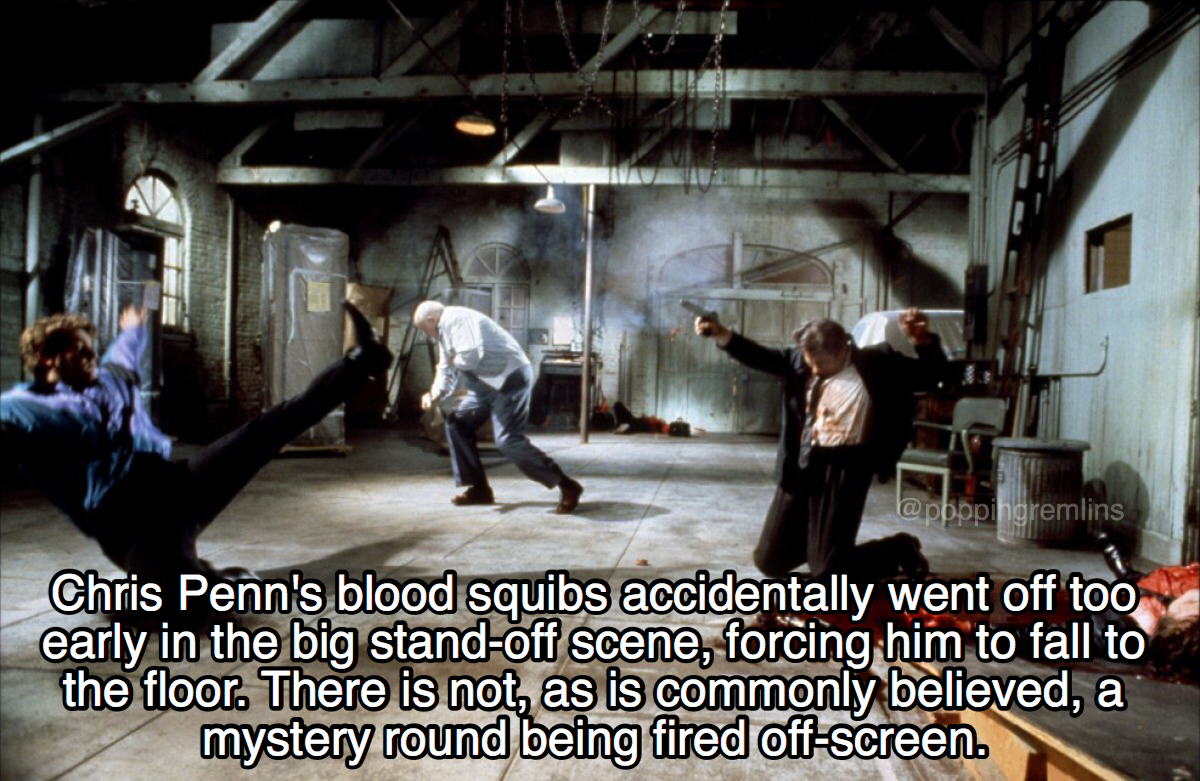
Or, as Tarantino himself referred to such fare, “Merchant-Ivory shit”. In the book, the festival’s founder, Robert Redford, is quoted conveying the disgust he felt during the premiere of Reservoir Dogs: “I’d gone to the theater one night during the … festival to see a few films … and I could barely eat for 24 hours because they were so loaded with violence.” Shoot-’em-up Tarantino wannabes are currently as commonplace at Sundance as feelgood coming-of-age stories, but his vicious nihilism and blood-flecked honor was totally anathema to the humane status quo in Park City at the time, a haven for heartfelt, sensitive passion projects about real people’s real struggles.

But for all the mythologizing of Reservoir Dogs as an overnight Sundance success, Peter Biskind’s definitive scene report Down and Dirty Pictures: Miramax, Sundance, and the Rise of Independent Film tells a conflicting story. There’s a temptation to make the broad-stroked conclusion that the public views Reservoir Dogs through more enlightened eyes these days, simultaneously holding reservations about Tarantino’s provocateur tendencies along with admiration for his mastery of form. (Once Upon a Time in Hollywood scaled back the overt bigotry, and still generated a full-blown controversy for portraying an Asian character in a somewhat unflattering light.) In the more permissive era of the 90s, however, he simply and nonjudgmentally presented a crew of crooks prone to spouting riffs of jolting racism, antisemitism, you name it. Tarantino surely knows this, recently cloaking his fondness for the taboo-teasing of bad language in period settings like the old west or antebellum south that call for it. Even as the festival circuit’s boy genius has matured by leaps and bounds as a stylist, he’s remained a political arrested-development case, unable to part with the laddish glee he takes in riling up polite society.Īll of this is to say that the N-word doesn’t play the way it used to. It’s now an edifying point of comparison, throwing the ways Tarantino has grown – and, more frequently, refused to grow – into sharper relief for its contrast with his present, the industry’s and his audience’s. In revisiting one of the most exhaustively critiqued works in the western canon, fresh insights can really only be gleaned from how the intervening years have changed its creator, and how we’ve changed along with him. Every aspect of the film has been subjected to fine-toothed analysis: the notion of costuming as symbolic armor, the soundtrack offering redemptive cachet to one-hit wonders deprived of cool cred, the Shakespearean air to the corpse-strewn climax, the hip irony of Michael Madsen’s ear-slicing soft-shoe routine, the hidden foreshadowing of betrayal in the placement of soap bottles.Īfter 30 years, the textual bones have been picked clean.

The image of dorm room walls plastered with his posters has become a cliche, backed up by the maybe-apocryphal claims that film school professors had to ban essays on the auteur’s work just to get dazzled kids to write about anyone else. A shark in the fishpond of the fledgling American indie circuit, his auspicious feature debut piqued the interest of innumerable junior cinephiles and David Foster Wallace alike.
RESERVOIR DOGS MEME SHIRT MOVIE
What’s left to say about Reservoir Dogs, a movie that’s all talk?Ī young Quentin Tarantino’s greatest trick was to turn his audience into the same sort of discussion group that picked over the finer points of Madonna over coffee at LA diner Pat and Lorraine’s, scouring pop culture for hidden profundities.


 0 kommentar(er)
0 kommentar(er)
